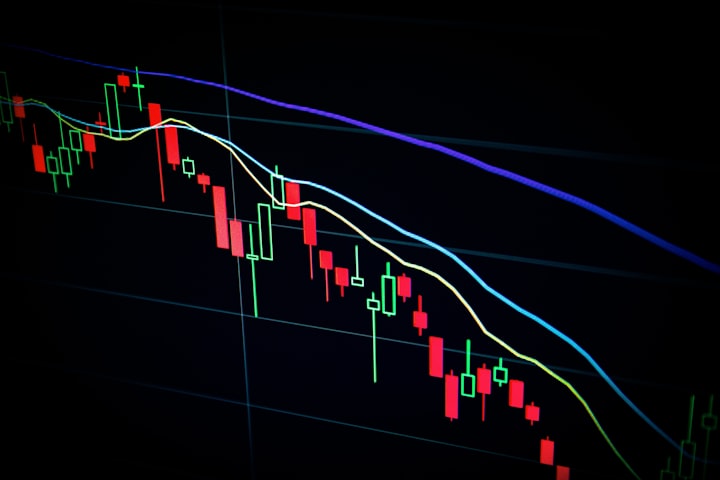How do Index CFDs Work?
A trader can trade stock indices without owning the stocks that make up the index by using a CFD.

A quick and convenient approach to trading the entire stock market is using index CFDs. They are a well-liked substitute for purchasing individual shares. Is trading in indices good for you and how does it work?
A trader can trade stock indices without owning the stocks that make up the index by using a CFD. For instance, a trader may purchase the Wall Street 30 CFD rather than the entire Dow Jones Industrial Average of 30 stocks. So, today, with the help of this blog, we are going to help you understand how Index CFD works.
How about we examine this? Let’s get started!
What is a Stock Index?
A stock index is a collection of several equities that are grouped together, and the price of the index is determined by taking the average price of all the stocks in the index. Because of how they are determined, the most well-known stock indexes, such as the Dow Jones and S&P 500, are also referred to as stock averages.
The Dow Jones, the first index, was created by simply combining the shares of the 30 largest American industrial corporations. Today, every nation has a benchmark stock index that is used to measure the success of that nation's market.
What is a CFD?
CFDs known as Contracts for Difference, represent the price change of an underlying asset. You don't own the underlying asset when you trade CFD indices. Simply speculating on a financial instrument's price fluctuation serves as the goal. We are talking about index CFDs here, but a CFD can also be based on other asset classes like foreign exchange markets, physical commodities, or digital currencies.
What is an Index CFD - Take a Quick Glimpse
A contract for difference known as an Index CFD employs index futures contracts as its underlying asset. Without actually owning the indices directly, you can trade them through CFDs.
A File CFD is a type of distinction agreement that uses record potential contracts as the primary resource. Without actually claiming the files directly, you can trade lists through CFDs.
An index represents the overall performance of different securities. Consider the scenario where you are trading the five stocks A, B, C, D, and E, each of which is worth $2. The index will be computed by summing the prices of all the securities and dividing the sum by the number of securities. The index for A, B, C, D, and E is therefore $10/5 = $2.
The agreement expires soon before the future agreement's expiration date and the index prices when trading Index CFDs reflect the Record CFD charges.
It does make a considerable difference that Index CFDs, which provide leverage trading, give you larger market exposure with less capital than trading indices.
Trading is accessible for the S&P 500, NASDAQ 100, Dow Jones Industrial Average, Nifty 50, EuroStoxx 50, and other indices.
Suggested read: CFD trading for beginners
How Does an Index CFD Trade Work?
CFD indices trading enables investors to speculate on changes in an individual stock market index's price without actually owning the underlying assets. It starts by deciding whether to take a long or short position in an index, such as the S&P 500 or FTSE 100.
By purchasing or selling CFDs based on the performance of the index, traders can enter the market. The difference between the opening and closing prices determines whether traders make money or lose money. The CFD price reflects the value of the underlying index. Leveraged trading is prevalent and provides the chance to increase profits or losses.
To limit any negative effects, risk management instruments like stop-loss orders are frequently used. Investors can profit from price changes in significant stock market indexes overall by trading CFD indices.
Dow Jones Index CFDs Trade Example
Lots are the units used when trading index CFDs. In order to know exactly how much you are buying or selling and to understand the risk associated with your trade, you must be aware of the contract size per lot that each index has.
Consider that you are trading the Dow Jones (which is listed as US30 by several CFD brokers) with a broker whose contract size for one lot is 1. The final digit prior to the decimal is known as a point in trading.
For Example
The '5' is the point in the Dow index example if you were trading at a price of 33425.89. As a result, if you were to sell short the Dow index CFDs at 33425.89 with a size of 10, betting that its price would decline, but sadly in a few days the price rose to 33443.89, you would lose 18*10 = 180 USD (excluding overnight expenses). The price changed 18 points in your favor.
Suggested Read: Understand the basics of CFD Indices Trading and its Advantages
Concluding Thoughts
In summary, instead of using CFDs for individual stocks, traders can use index CFDs. The changes in indices tend to be less extreme and follow key market events or buyer confidence as opposed to the earnings and losses of different firms. Individual equities, however, may undergo volatility as a result of a botched product launch, PR difficulties, weak sales, or other circumstances.
Index trading is more flexible since individual firm gains and losses might affect the index's value overall, but they can also be countered or absorbed by those of other index companies.
Originally Published on BlogSpot
Source: https://capitalxtendblog.blogspot.com/2023/09/how-do-index-cfds-work.html






Comments
There are no comments for this story
Be the first to respond and start the conversation.